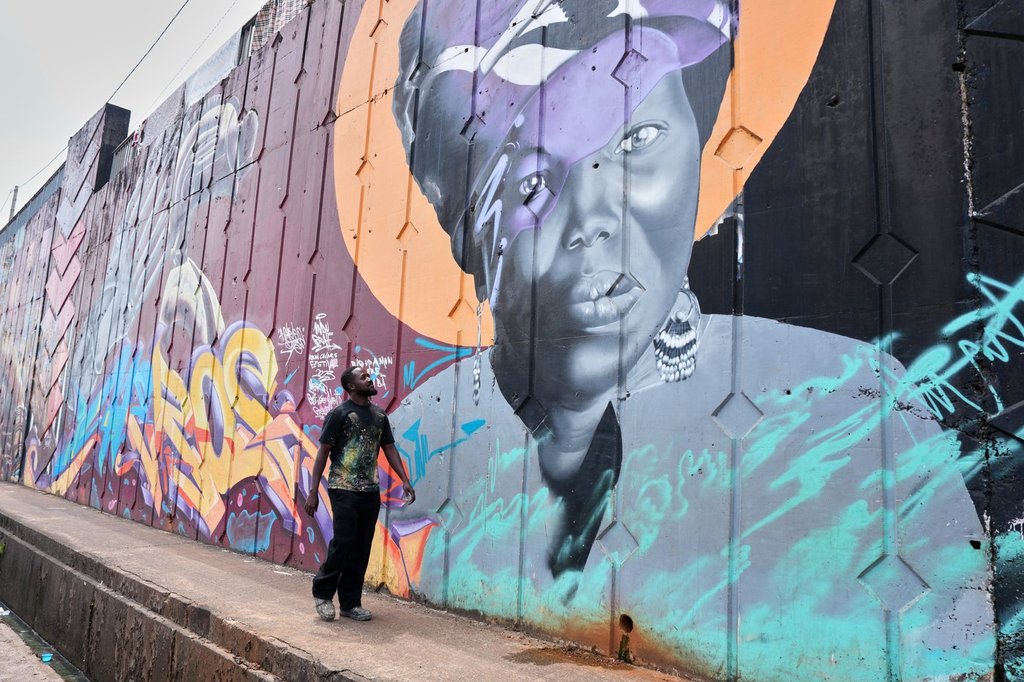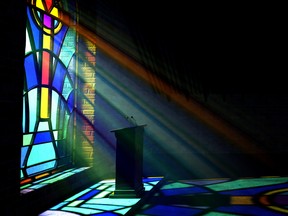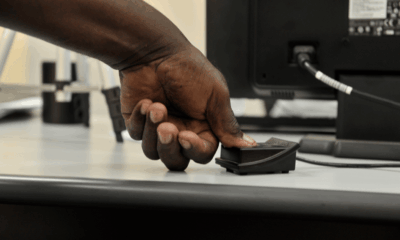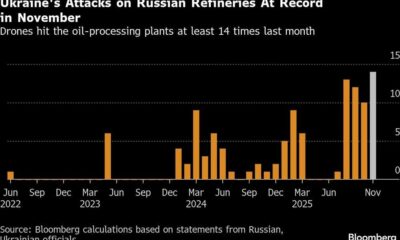Top Stories
Graffiti Movement Surges in Guinea, Transforming Urban Landscape

URGENT UPDATE: Graffiti is rapidly gaining acceptance in Conakry, Guinea, as street artists like Omar Diaw, known as “Chimere,” transform the city’s landscape with vibrant murals. Just today, Diaw spray-painted a massive portrait of Guinea’s military leader, Gen. Mamadi Doumbouya, bringing public art into the spotlight.
In a city grappling with rapid urbanization, Diaw’s work reflects the pulse of local culture and history, resonating deeply with residents. “Graffiti is good for Africa; it’s good for this country,” said local driver Ousmane Sylla, who admires the striking murals. His sentiments echo a growing trend where graffiti is viewed not as vandalism but as a vital medium for community expression.
Diaw, who relocated to Guinea from Senegal in 2018, initially faced skepticism about graffiti’s role in society. “It was thought that graffiti was vandalism,” he explained. To combat this perception, Diaw launched public awareness campaigns, including art focused on COVID-19 preventive measures. His gentle approach has helped to win over the public and authorities alike.
The evolution of graffiti in West Africa began in the late 1980s when Amadou Lamine Ngom, known as “Docta,” introduced the art form to Dakar. Ngom’s early work aimed to beautify urban spaces, and today, he mentors emerging artists like Diaw, emphasizing the need for art that resonates with African values and realities. “I decided to do it in broad daylight,” Ngom stated, marking a shift in how graffiti is perceived in urban landscapes.
As Diaw’s collective, Guinea Ghetto Graff, gains momentum, murals depicting historical figures like the West African resistance fighter Samory Toure are becoming commonplace. These artworks not only beautify the environment but also serve as a reminder of the country’s rich history and cultural identity.
The support from local authorities is crucial; Conakry’s governor has provided Diaw with the freedom to create his art across the city. This endorsement has allowed graffiti to flourish, with everyday passersby stopping to appreciate the art, which often depicts poignant themes such as migration and national pride.
Looking ahead, calls for greater diversity within the graffiti scene are emerging. Artist Mama Aissata Camara expressed hope for more female representation, challenging the perception that graffiti is a male-dominated field. “I would really like to see more women become a part of this,” she said, highlighting the need for inclusive representation.
As the graffiti movement grows in Guinea, it is clear that this art form is not just about aesthetics; it is a powerful vehicle for social change and cultural expression. The murals are transforming public spaces, engaging communities, and redefining urban identity.
Stay tuned for more updates as this vibrant movement continues to evolve, shaping the future of urban art in West Africa. Share your thoughts on how graffiti is impacting your community!
-

 Politics1 month ago
Politics1 month agoSecwepemc First Nation Seeks Aboriginal Title Over Kamloops Area
-

 World5 months ago
World5 months agoScientists Unearth Ancient Antarctic Ice to Unlock Climate Secrets
-

 Entertainment5 months ago
Entertainment5 months agoTrump and McCormick to Announce $70 Billion Energy Investments
-

 Lifestyle5 months ago
Lifestyle5 months agoTransLink Launches Food Truck Program to Boost Revenue in Vancouver
-

 Science5 months ago
Science5 months agoFour Astronauts Return to Earth After International Space Station Mission
-

 Lifestyle3 months ago
Lifestyle3 months agoManitoba’s Burger Champion Shines Again Amid Dining Innovations
-

 Technology4 months ago
Technology4 months agoApple Notes Enhances Functionality with Markdown Support in macOS 26
-

 Top Stories2 months ago
Top Stories2 months agoUrgent Update: Fatal Crash on Highway 99 Claims Life of Pitt Meadows Man
-

 Top Stories2 weeks ago
Top Stories2 weeks agoHomemade Houseboat ‘Neverlanding’ Captivates Lake Huron Voyagers
-

 Politics4 months ago
Politics4 months agoUkrainian Tennis Star Elina Svitolina Faces Death Threats Online
-

 Sports5 months ago
Sports5 months agoSearch Underway for Missing Hunter Amid Hokkaido Bear Emergency
-

 Politics5 months ago
Politics5 months agoCarney Engages First Nations Leaders at Development Law Summit





















